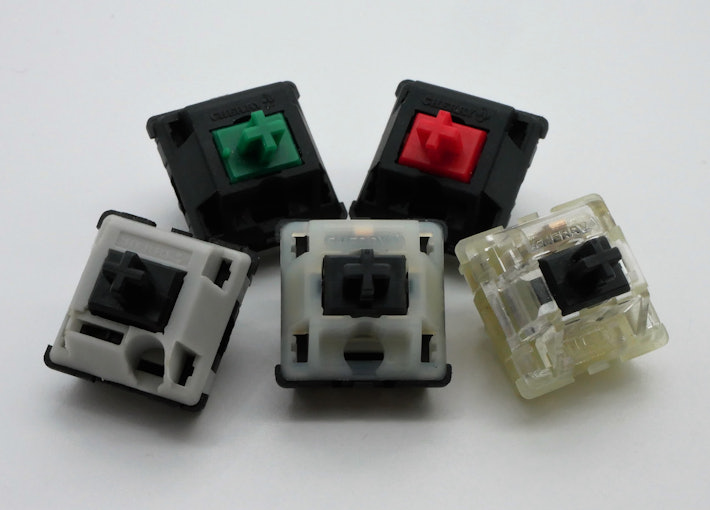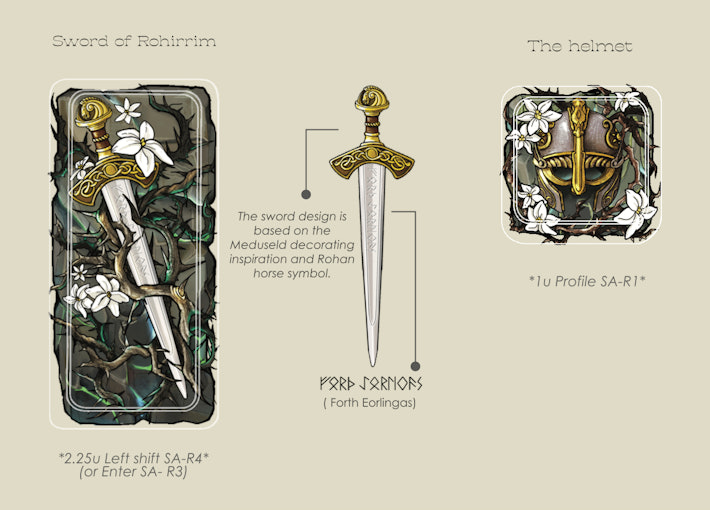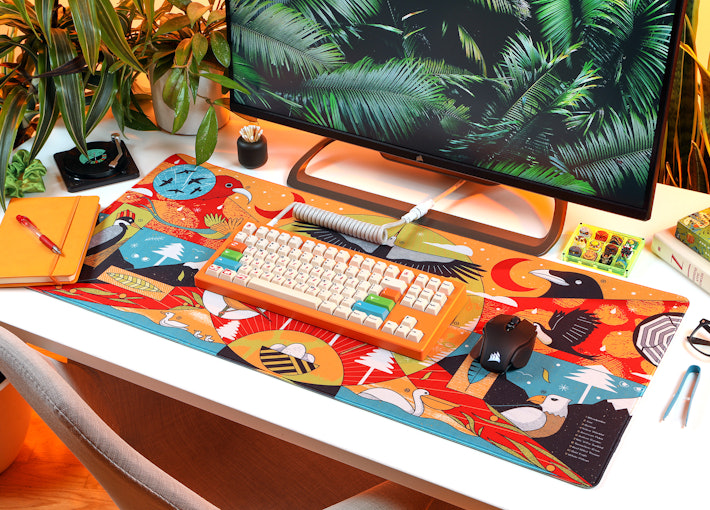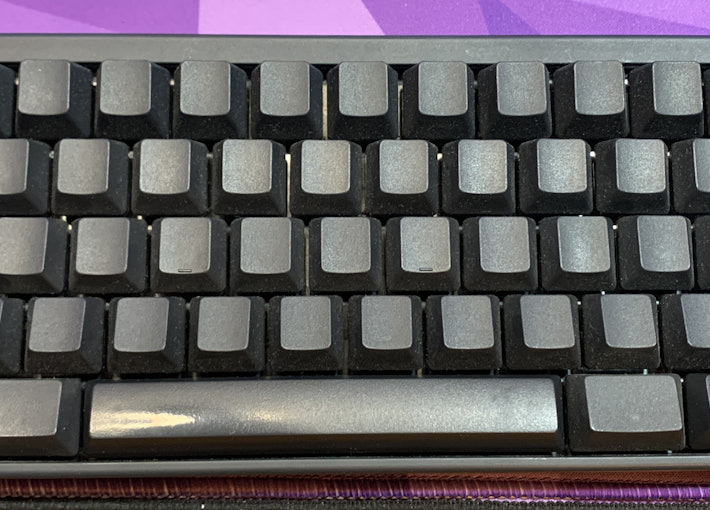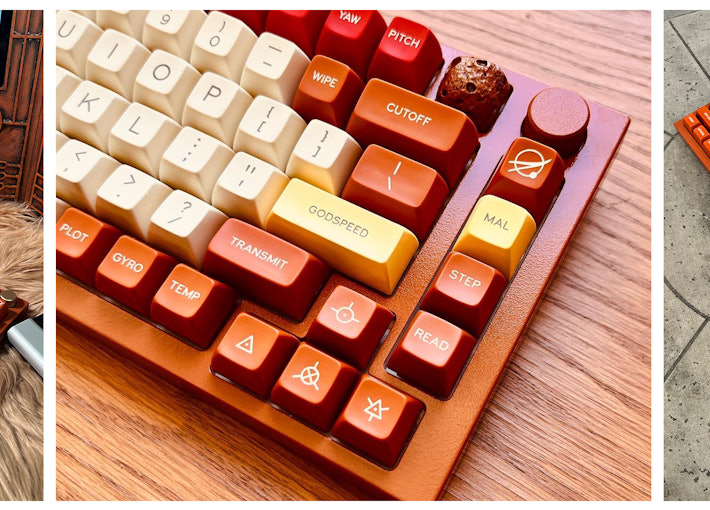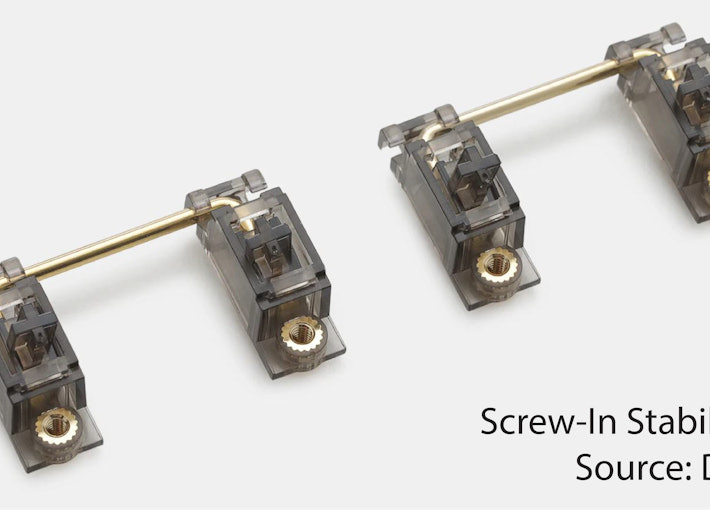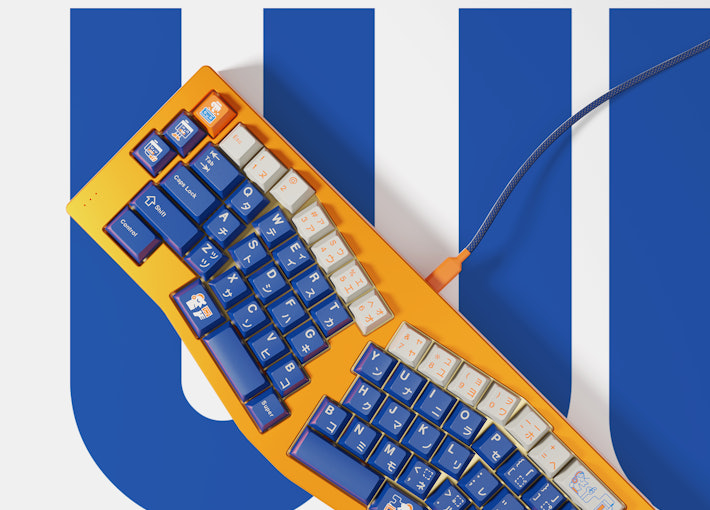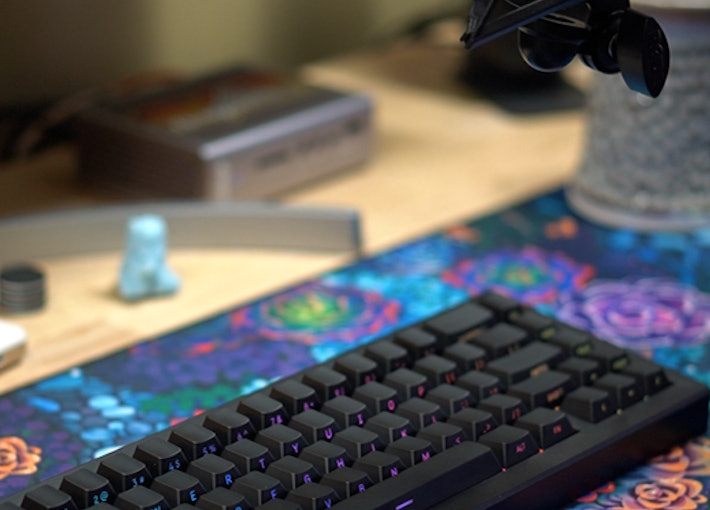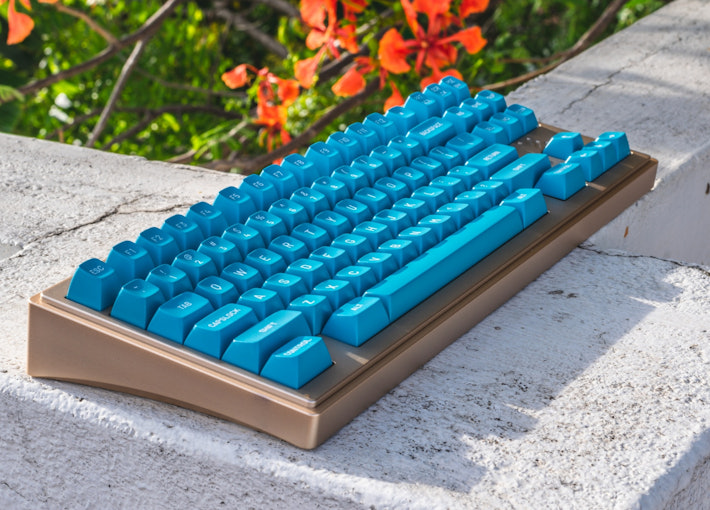Click to view our Accessibility Statement or contact us with accessibility-related questions





















Mechanical Keyboards
ThereminGoatMK
429
Feb 8, 2023
The Who's Who of Switch Manufacturers
Let’s face it – everything in the world today revolves around brand names. The clothes have to be Supreme or Gucci, the cars have to be Lamborghinis or Porsches, and the cereal better have Toucan Sam on it, or I will go hungry all day. While a lot of these brands have become ingrained into every facet of our lives thanks to social media, television, etc., many people don’t realize just how foreign the appeal of some of these brands would be if we weren’t overly invested in fashion, cars, or breakfast cereals. In much the same way, when people begin stepping into the mechanical keyboard scene they lose complete bearing on what brands represent what. The matter is only further compounded with switches, which have nearly exploded in popularity and number of releases in recent years. So, while I may not be able to give you all of the ins and outs of every single manufacturer out there, here’s an arbitrary amount of the most common brand names in switches that you should be aware of...
ThereminGoatMK
429
Nov 1, 2022
The Three Main Types of Switches
Among the seemingly countless number of switch options out there, you’ll be surprised to know that the vast majority of them fit cleanly into one of three different categories known as ‘linear’, ‘tactile’, or ‘clicky’. I promise that I am not deceiving you here. Even with all of the different variations in weightings, color schemes, and manufacturing brand names that you see among switch options out there, most of them are one of these three main types. (Hint: That’s why DROP breaks down their switch options into those three categories.)
As to what the distinguishing features of each of the three main types of switches are, simply know that these are used to differentiate the sound and/or feeling between each switch. Additionally, some of the variations that you’ll see within each of these three main types may further provide some context as to how these switches are different from normal linears, tactiles, or clickies. So, without much more delay, let’s go ahead and walk through...

HoffmanMyster
3110
Apr 10, 2024
From Art to Artisan
Before launching any product, there are many designs, concepts, and ideas that pass between teams before arriving at a final design which makes its way to your computer screen and, eventually, desk. This is no more true than when considering possibly the most "art"-forward aspect of the mechanical keyboard hobby—artisan keycaps. It should be obvious that a lot of planning and artistry goes into crafting these literal pieces of art. We don't often get a chance to see behind the curtain, though. So, let's take a closer look at the upcoming Drop + Dwarf Factory Lord of the Rings Rohan Artisan Keycaps.
Before any resin is spilled, Middle Earth (the entity that licenses the Lord of the Rings IP) needs to approve the concepts based on concept art provided by Dwarf Factory. We connect with DF to coordinate on the topic and subject matter—in this particular case, additional Rohan-themed designs—to be sure that the concepts match with overall direction, whether that be pairing up with a...

storyboardtech
417
Oct 5, 2023
In defense of MT3, the most misunderstood and possibly greatest keycap profile.
Offices are tense spaces, there’s no way around it. Whether they’re silent, museum-like tombs or raucous zoos filled with energy. In this place of distraction, and often discomfort, it’s important to have tools that make you more efficient, comfortable and focused. Personally, I am lucky to work in a happy, healthy work environment with amazing coworkers, but my office is filled with distraction and on my best days it’s a challenging ecosystem in which to create.
I’ll be honest, I’m no gamer, and it wasn’t the speedy, silent linear switches or 8000Hz polling rates of gaming boards that drew me to this hobby. It was the spirit of clickety-clackety typewriters of the past and a desire to craft my words on a surface that deserved them… one that amplified my ideas and provided a comfy ambience that encouraged creativity.
I don’t feel old, and certainly don’t act old, but I’ve been a designer for 25 of my 43 years and in that whole time I’ve hated the keyboards I’ve used. With the...

dovenyi
61
Apr 30, 2024
What is SpaceFN and why you should give it a try
The SpaceFN concept - setting up your space key as a layer switch when held - is probably one of the most useful tweaks in the keyboard hobby. Let me explain how it works.
My SpaceFN article on kbd.news made some rounds recently - quite surprisingly given the age of this concept. This piece you're reading is a condensed version of the full post. If you're left with unanswered questions, you'll most likely find the info you're looking for in the original write-up.
On my imaginary top list of the most useful keyboard features, tweaks and hacks, SpaceFN would deserve a podium finish for sure. But what makes it so special?
In short: SpaceFN is easy to implement, easy to learn, costs nothing, can be used with any keyboard, and can improve your productivity instantly.
I will list its benefits below, but can state right at this point that the SpaceFN concept, setting up your space key as a layer switch when held, is clearly one of the most useful tweaks in the keyboard hobby....

Drop+MechKeys
4399
May 21, 2024
Drop + Bees.Keys DCD Hundred Acres Keycap Set
Winnie-the-Pooh - a story, characters, and setting loved by many across the globe. Most of us grew up with at least some exposure to this lovable bear and his woodland friends. Personally, the Hundred Acre Wood takes me back to a simpler time in life—a time of whimsy and wonder.
Bees.Keys shares this appreciation and affection for Pooh Bear and friends, going as far as designing a keycap set around the characters and themes. One look at the set shows their dedication and attention to detail. From the font to period-accurate depictions of characters to elaborate desk mat designs, this is as faithful a tribute as you’ll find.
We hope you’ll join us on this nostalgic journey through the Hundred Acre Wood when the set launches later this month. Hit Request to be notified!

Drop+MechKeys
4399
Jun 25, 2024
Introducing Bees.Keys, designer duo behind DCD Hundred Acres
With the launch of DCD Hundred Acres imminently on the horizon, we wanted to introduce the designers of this fantastic set to the Drop community! Welcome Bees.Keys, and thank you both for so generously giving us your time to chat about yourselves, your process, and the Hundred Acres keycap set! For those unfamiliar, Bees.Keys is a team made up of Beesley and Cthalupa - both fantastic designers and a joy to speak with.
Without further ado, let's get things started!
Tell us a bit about yourself and your history - relevant to mech keys or not. Where are you from, what is your “day job”, what are your other hobbies and interests aside from keyboards?
[Beesley]
I’m from the UK, and my day job is producing marketing renders for mechanical keyboards and keycaps. I have always had a passion for CGI since I was kid, getting a subscription to 3D World magazine for my 10th birthday.
Other hobbies? What are other hobbies? I’m lucky enough to enjoy doing something for work so much...

dvorcol
5393
Apr 23, 2024
Support for Alternative Layouts
This is a summary of how alternative layouts have been supported by kits such as Colevrak and Homing. It is not a discussion of alt layout performance and development, but if that interests you I highly recommend starting with Pascal Getreuer’s A guide to alt keyboard layouts (why, how, which one?). It’s a concise and comprehensive overview with links to some great sites that go deeper. He also has a separate Links about keyboards page. The Keyboard layouts doc he recommends explains layout goals and metrics in detail, summarizing the alt layouts discussed here as well as more than one hundred others.
Sculpted-profile
The majority of custom keycap sets are sculpted-profile (Cherry, SA, MT3, KAT, etc. - more on profiles generally here) so let’s start there. Because each row has a unique keycap shape, alt layouts require a unique keycap for each legend that moves off its QWERTY row.
At first there were two
The Dvorak layout was patented in 1936 by August Dvorak & William L....

Drop+MechKeys
4399
Nov 20, 2023
Designing DCD Bird Jungle
We met designer ArqKeebs in the previous Studio Story for DCD Bird Jungle. Now, let’s learn a little more about the keycap set itself—how Arq pulls inspiration from the real world and creates unique and compelling designs based on various source materials.
Clearly birds are a common theme between your most recent set and the Bird Jungle keycap set; have you always been interested in ornithology, or was that a more recent interest? Is there anything in particular that draws you to birds over other inspiration?
Honestly it's something recent. After seeing the Hyacinth macaw everything changed. I never paid attention to birds before. It's like when you see something once then see it everywhere. People need to take 5 minutes just to google up some birds. There are some wild and just stunning birds. Their colors are truly wonderful.
Side question as a board game fan—have you ever played Wingspan? If so, does that inspire you with its artwork and design choices?
I didn't...
cobertt
22
May 7, 2024
State of the Hobby 2024
A brief reflection and look at how far our community has come since joining.
I’ve been in the mechanical keyboard hobby for a very long time. It started as a high school student’s search for a keyboard for writing novels back in the 2008-2009 school year. I thought I wanted to be an author and I felt I needed a keyboard that I could sit down to at my desk and just write. After researching, joining forums, and saving money, I made my first purchase in the hobby, a blank black Happy Hacking Keyboard Professional 2. I still own this keyboard and while it is heavily modded now, it remains one of my all-time favorites.
My HHKB Pro2 with MitchCapped Accents
Many people would have stopped there, but keyboards became a hobby. I enjoyed learning about them, and early on, I enjoyed hunting for them in thrift shops. I would dig through bins at Goodwill and Salvation Army while popping keycaps off with paperclips looking for mechanical switches. I searched for a birthday Model M...
ThereminGoatMK
429
Apr 17, 2024
Do I Need to Lube My Keyboard Switches?
Figure 1: Sometime around here is a good time to ask that question...
If you’re new to the mechanical keyboard hobby, I have no doubt that planning your first keyboard build is a bit of a daunting task. To be entirely honest with you, it’s only a tiny bit less daunting for your second or even third keyboard builds should you stay around a little while longer. You’ve got the keyboard itself to worry about, stabilizers, keycaps, and even switches on top of all of the intangible marks you want your dream keyboard to hit. Switches are especially daunting right out of the gate as there’s just so many options out there to pick from – each with their own unique specifications, manufacturers, and more. Yet, in spite of all of these differences between switches, time and time again I find people always asking about lubing switches as one of their chief concerns when it comes to picking some up. With countless numbers of content creators talking about lubing switches, its no...

storyboardtech
417
Feb 21, 2024
SA in 2024: Where does the high-profile king stand in the modern keyboard hobby?
In early 2021, I only had eyes for SA Godspeed.
Raised in Florida across the bay from Cape Canaveral, I grew up watching space shuttle launches, and my dad’s life-long obsession with NASA, space and sci-fi quickly spread to me. At 27, I was introduced to Neil Armstrong, a personal hero, and was able to tell him the impact he had on me and my family. So on that fateful spring day when I walked into my IT department and told my coworkers that I was thinking of getting into mechanical keyboards, the first set I wanted to own was Godspeed. It took awhile, and I mean awhile for me to accumulate all the different versions of that set. It has three alphas (Solar, Lunar and Supernova), a few full alternates (Mito & Genespeed) and several alternate modifier sets including the transcendent Ares colorway. But several hundred dollars, and many months later, I had constructed a few keyboards all equipped with different versions of SA Godspeed. I made an Earth keyboard, a Mars, an Asteroid, a...
cobertt
22
Mar 5, 2024
Stabilizer Shake Down - A breakdown of modern MX-style stabilizers
One of the best parts of custom keyboards is the sound they make. It’s clean, crisp, and free from any chatter or rattles. On a well-built custom keyboard, each keystroke is solid and definitive. On the smaller keys on your keyboard, keys 1.75 units or less, you can attribute that feeling to the switches themselves. However, on larger keys, keys that are 2 units and larger, stabilizers can make or break that feeling. Today, there are a plethora of different stabilizer options available for purchase. It can be confusing trying to navigate the different brands and configurations of stabilizers. Hopefully, after reading this, you’ll have the confidence to purchase the stabilizer that fits both your budget and your needs.
Before laying out the stabilizer options, it is important to understand their function within a keyboard. Stabilizers serve two main purposes. The first is to ensure that when pressing a larger key (2 units or larger) there is consistency in the keycap press. This...

Drop+MechKeys
4399
Apr 10, 2024
Mr. Bingo's Design Process and Inspiration
If you haven't seen the first part of our interview series with Mr. Bingo, be sure to check that out for an introduction to the designer himself. We're picking things up here with part two, where Mr. Bingo shares some of his design process and how he draws inspiration for his designs!
Before we dive in—we want to express another huge thank you to Mr. Bingo for taking the time to answer all of our questions here. It's always fascinating to get a peek behind the curtain and we're very appreciative for the opportunity.
Do you have a process for gathering your potential ideas, and culling down to workable concepts that you select designs to move forward with and take to the community? Would you be able to share a bit about what goes into those decisions?
I feel that I am a designer who likes to have physical things and not digital. So when it comes to making a set and already have the idea, I look for things physically, for example, in the matcha set, I did a lot of...
ThereminGoatMK
429
Mar 27, 2024
Mechanical Keyboard Sound Isn't That Simple
Figure 1: I couldn't think of a more literal way to represent this article if I tried...
Looking back just a few years ago, there’s no doubt that the huge influx of people that joined the hobby at the peak of the COVID pandemic were drawn to keyboards by way of YouTube, TikTok, and other audio-visual content platforms. Even as the output from these content creators has waned in recent months, their collective impact and legacy on the keyboard hobby is rather firmly etched in the history books. As a result of all of their sound tests, build logs, and opinion videos, the message is clear to any new person joining the hobby: mechanical keyboards are all about the sound. Thock this, clack that. Whether it’s keyboards, keycaps, or even singular switches, seemingly everyone new to the hobby meticulously pores over each component of their keyboard not in an attempt to figure out how it will feel in hand, but how it will sound as they’re furiously grinding their way out from...

HoffmanMyster
3110
Jan 5, 2023
Keycap Profiles
When considering which aftermarket keycap set to get, there can be many different factors to consider. We’ve already discussed the different materials that keycaps can be made from, and of course there is the obvious colorway consideration, but what about the shape of the individual keycaps themselves?
In the early days of the enthusiast keyboard hobby, there were extremely limited options available for aftermarket keycap sets. Unicomp was making replacement keycap sets for buckling spring keyboards and Signature Plastics was making keycap sets compatible with MX switches (GMK had not yet become an option to the enthusiast market - that would come a couple years later).
Now, though? You’d be easily forgiven for being overwhelmed by the number of options available on the market at this point.
Let’s walk through the characteristics that define the various profiles, and cover some of the major profiles you’ll come across.
▪️ Keycap Shape (Spherical, Cylindrical, Flat)
▪️ Sculpted...

Drop+MechKeys
4399
Apr 9, 2024
Introducing Mr. Bingo, Retro-Inspired Designer
It is with great pleasure that we are able to formally introduce Mr. Bingo by way of an interview! Thank you so much for taking the time to answer all of our questions and allow us to peer inside your process a bit.
For those of you who aren't familiar with Mr. Bingo's past work yet, he's the brains behind GMK Cream Matcha and GMK Cubed, as well as many renders in support of other projects across the hobby.
He is of course also the designer behind DCD WLK-MN, his latest project inspired by a love of retro gadgets. So, without further ado, let's get to know Mr. Bingo!
We’d love to hear a little bit about yourself and your history - relevant to mech keys or not. Where are you from, what is your “day job”, what are your other hobbies and interests aside from keyboards?
Hey, well my day job is to design and do renders for a company that makes keyboards and gaming products. So I live from this hobby everyday! I also have other small hobbies that I'm just starting right...

HoffmanMyster
3110
Apr 9, 2024
DCX vs DCD vs DCL - Drop’s Keycap Profiles Explained
We’ve covered the basics of keycap profiles before—spherical/cylindrical, sculpted/uniform, etc. One thing that has come up more and more over the years as we’ve expanded our portfolio of offerings here at Drop is the distinction between some of our similar profiles. Specifically, what is the actual difference between DCX, DCD, and DCL?
Cylindrical Profiles
To recap the previous article on the topic, one of the most basic ways to separate various keycap profiles is by shape (cylindrical, spherical, or flat). DCX, DCD, and DCL are all cylindrical profiles.
The most famous cylindrical profile is Cherry profile, as defined by the original manufacturer of the keycaps—Cherry. GMK now owns those tools, and as such, only they can technically claim to produce “Cherry” profile keycaps. Similar keycap profiles are often called Cherry profile colloquially, but are in actuality slightly different. For the sake of not splitting hairs, all of the cylindrical profiles discussed here are...

The_Manic_Geek
417
Jan 18, 2023
Best Practices When Building A Keyboard
I don’t like the phrase “it should go without saying”; if that were the case, there would be so many things that never got mentioned, and a lot of things we’d get wrong because of it. This is also true when building your custom mechanical keyboard: there’s a multitude of best practices out there that can, and will, help guide you towards a cleanly built, good-sounding board and an overall positive experience, provided someone *tells* you what those are. Here are some that “should go without saying”, but will be said anyway for those who are new to the hobby, or just getting back in after some time away!
We’ll be focusing on hotswap mechanical keyboards, as those are by and large the most popular kind of PCB for newcomers and veterans alike, though many of our practices will still apply to soldered builds as well. As always, if there’s anything you feel we missed and would like to add, or need further clarification on, feel free to leave a comment below!
Check All Parts Before...
cobertt
22
Apr 2, 2024
3 or 5? How many pins does your switch really need?
One of the oldest questions, albeit one you don’t see very often anymore, is about 3-pin and 5-pin MX switches. Early in the custom switch scene, budding enthusiasts would need to determine whether their keyboard needs 3-pin or 5-pin switches. Today, the question doesn’t appear as often as it used to, but it is still important to know the difference and when one is a better choice.
The difference between these two types of switches is in the name, the number of pins. As seen in the pictures below, 3-pin switches have two metal legs for the contact leaves and registering of switch presses as well as the stem pole. These switches were traditionally called plate mount switches, as they relied on the plate to align the switches on the PCB. 5-pin switches have the same contact pins and stem pole but are also accompanied by two additional alignment pins on the left and right of the stem pole. These were called PCB mount switches, as they could be used without plates as the PCBs would...








